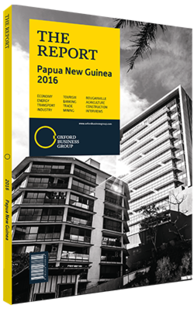Joseph Ernest Zveglich Jr, Director, Macroeconomic Research Division, Economic Research and Regional Cooperation Department, Asian Development Bank: Viewpoint

Viewpoint: Joseph Ernest Zveglich Jr
Growth in developing Asia has begun to ease slightly as prospects moderate in China and a delayed recovery in industrial economies causes a continued slowdown of growth. China has continued to shift to a new normal that is less dependent on exports and investment, which partly explains the slowdown we have observed in the region.
China’s growth is moderating to 6.5% for 2016 and 6.3% for 2017. Due to protracted global capital market volatility, the US Fed’s hike in interest rates and the spillover effect from China, the risk of regional instability is increasing. Furthermore, slow growth is expected from the major industrial economies of the US, the EU and Japan. Asia’s growth will continue to decelerate further in 2016 and 2017, but there is quite a lot of variation across the region. Growth is expected to fall in East Asia while India’s growth is expected to help reverse the recent slowdown. Due to several risk factors, adopting the right strategy to adjust to current parameters is likely to prove complicated. The future of US interest rates is uncertain, and the forecast anticipates an increase in the next two years, which will lead to global capital market volatility. This could release a shock that could reach developing Asia through trade and capital flows.
In addition, producer price deflation has had an impact on growth. There is compelling research to suggest that firms are affected differently than by consumer prices, and it alters their decision-making process. Moderate increases in producer prices have a big impact and cause delays in global investment decisions. Regarding economies in the Pacific sub-region, where most countries are commodity exporters, the impact of the price dip inclines us to predict a soft outlook for the years ahead. Exporters are seeing lower investment and a squeeze on government budgets affect the local economies. Nevertheless, small Pacific economies with oil-based electricity infrastructure should ease their trade balance thanks to low fuel prices.
With Papua New Guinea accounting for 70% of GDP in the Pacific sub-region, the big drop in growth in the country is having a negative impact across the region. The country had its success story: for the last decade in PNG, growth has been robust, averaging 6.8% in an economy that has doubled in size since 2009. But the resource-driven growth spikes are long gone, and strong adjustments have been necessary since the end of resource-related investments. The impact of growth brought about by resource investments did not translate as expected, due to shortcomings in the effectiveness of reinvestment and the relative weakness of the agricultural sector. In light of strong crosswinds from the slowdown of the Chinese economy, the commodity slump internationally and low private investment internally, growth is expected to slow to 2.4% in the coming years.
Low oil prices are not passed on to the consumer in PNG and this slows down private sector growth. Nonetheless, the outlook for the non-mining sector shows an increase in GDP. With palm oil output increasing for 2016 and tourism still a largely untapped sector, opportunities may arise. Regarding the fiscal policy, substantial budgetary adjustments have been made and discipline is likely to be necessary if fiscal misalignment is to be avoided.
The current situation can be described as volatile, and economic diversification is the next challenge for PNG. The factors holding it back are a lack of infrastructure, high operating costs and a weak business environment. Economic activity has to be led by the business environment. Moving out of this boom-and-bust cycle is the next step. This can be done by expanding non-resource opportunities, investing in human development and improving the efficiency of public expenditure.
You have reached the limit of premium articles you can view for free.
Choose from the options below to purchase print or digital editions of our Reports. You can also purchase a website subscription giving you unlimited access to all of our Reports online for 12 months.
If you have already purchased this Report or have a website subscription, please login to continue.

